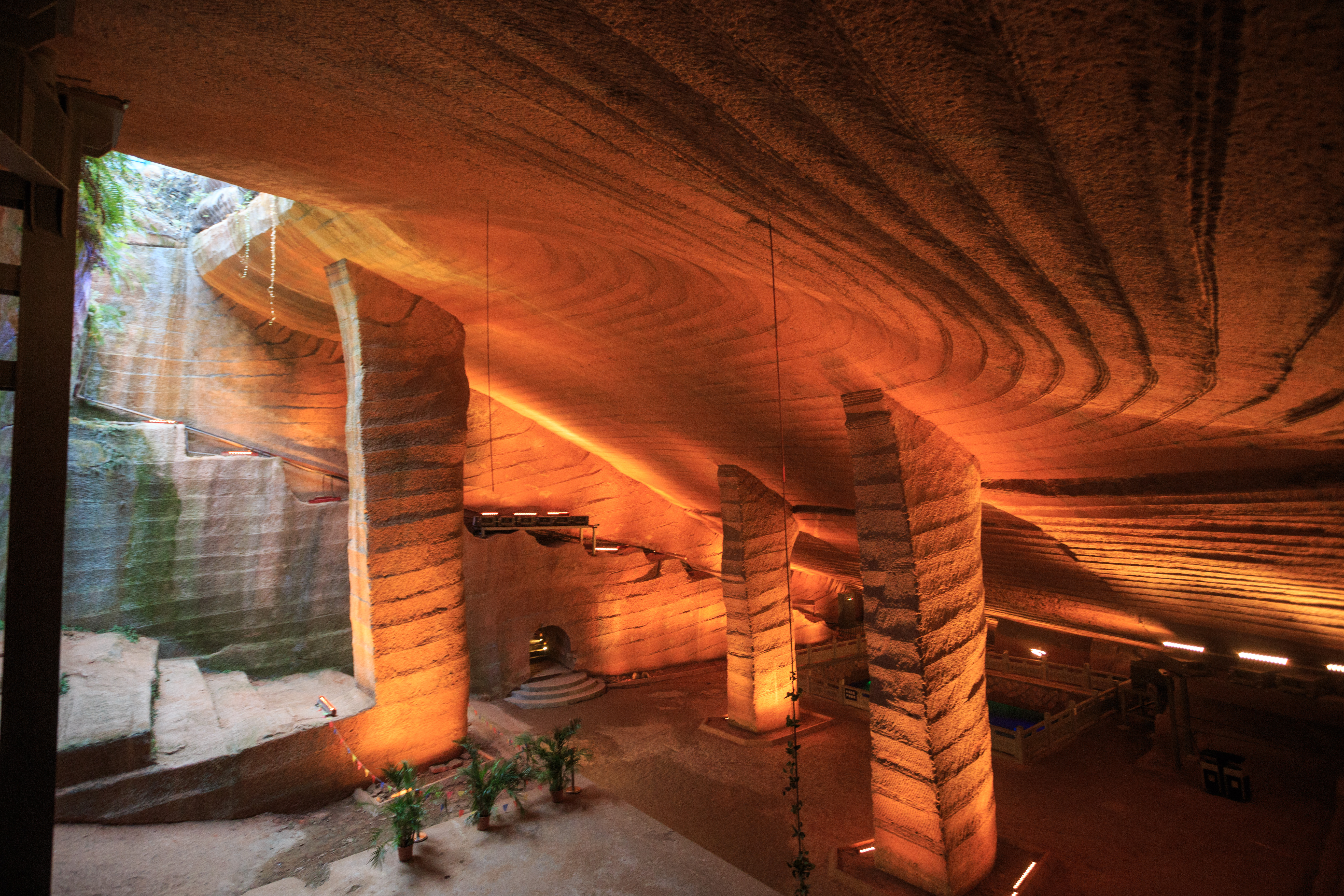Longyou Caves on:
[Wikipedia]
[Google]
[Amazon]
 The Longyou Caves (), also called the Xiaonanhai Stone Chambers (), are a group of 24 artificial
The Longyou Caves (), also called the Xiaonanhai Stone Chambers (), are a group of 24 artificial
 The Longyou Caves (), also called the Xiaonanhai Stone Chambers (), are a group of 24 artificial
The Longyou Caves (), also called the Xiaonanhai Stone Chambers (), are a group of 24 artificial sandstone
Sandstone is a clastic sedimentary rock composed mainly of sand-sized (0.0625 to 2 mm) silicate grains. Sandstones comprise about 20–25% of all sedimentary rocks.
Most sandstone is composed of quartz or feldspar (both silicates) ...
caverns located at Fenghuang
''Fènghuáng'' (, ) are mythological birds found in Sinospheric mythology that reign over all other birds. The males were originally called ''fèng'' and the females ''huáng'', but such a distinction of gender is often no longer made and ...
Hill, near the village of Shiyan Beicun on the Qu River in Longyou County
Longyou County is a county of Quzhou City, in the west of Zhejiang Province, China.
In it is located the Huzhen pagoda (). The Quzhou Longyou Caves or Grottoes (, )http://www.ancient-wisdom.co.uk/chinalongyou.htm] are a local feature.
Administr ...
, Quzhou prefecture, Zhejiang
Zhejiang ( or , ; , Chinese postal romanization, also romanized as Chekiang) is an East China, eastern, coastal Provinces of China, province of the People's Republic of China. Its capital and largest city is Hangzhou, and other notable citie ...
province, China
China, officially the People's Republic of China (PRC), is a country in East Asia. It is the world's most populous country, with a population exceeding 1.4 billion, slightly ahead of India. China spans the equivalent of five time zones and ...
. Created more than 2,000 years ago, they were not recorded in any historical documents and were rediscovered by farmers in 1992.
Discovery
In June 1992, four farmers in Longyou found the caves when they drained the water of five small ponds in their village. The ponds turned out to be five large manmade caverns. Further investigation revealed 19 more caverns nearby. They have been determined to be more than 2000 years old and their construction is not recorded in any historical documents. About to the northwest, theHuashan Grottoes
Mount Hua () is a mountain located near the city of Huayin in Shaanxi Province, about east of Xi'an. It is the "Western Mountain" of the Five Great Mountains of China and has a long history of religious significance. Originally classified as ...
at the riverbanks of the Xin'an River
The Qiantang River, formerly known as the Hangchow River and alternatively romanised as the Tsientang River, is a river in East China. An important commercial artery, it runs for through Zhejiang, passing through the provincial capital Hangz ...
somewhat resemble the Longyou Caves but are likely to have been built more than 1,500 years later during the late Ming Dynasty (1552–1667 AD).
Description
The caves are notable in several respects * The caves are very large considering their man-made origin: the average floor area of each cave is over , with heights of up to , and the total area covered is in excess of . * The ceiling, wall and pillar surfaces are all finished in the same manner, as a series of parallel bands or courses about wide containing parallel chiselling marks set at an angle of about 60° to the axis of the course. * They have maintained their structural integrity and do not interconnect with each other.References
{{Coord, 29.06157, N, 119.18403, E, display=title Caves of Zhejiang Archaeology of China History of Zhejiang Buildings and structures in Zhejiang 1992 archaeological discoveries Tourist attractions in Quzhou